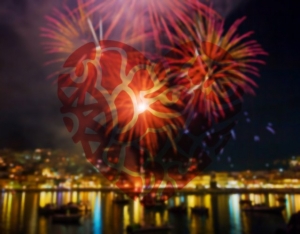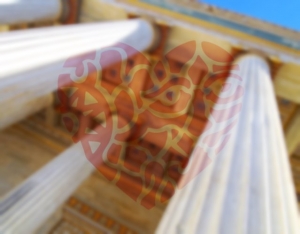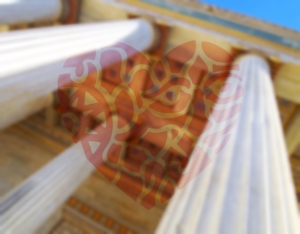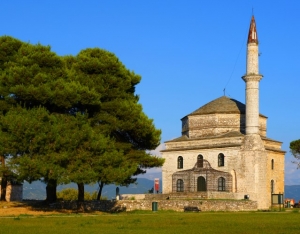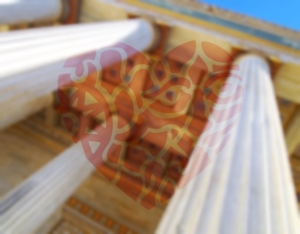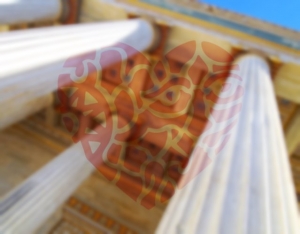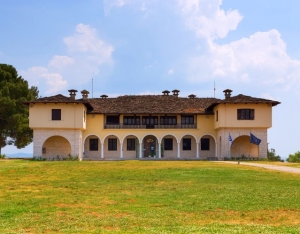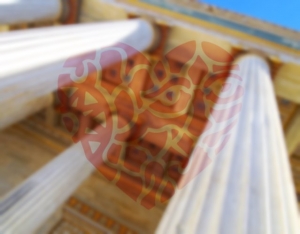Thodoris Bgenopoulos
The archaeological findings at Dimini and Sesklo indicate that the area of Magnesia was already inhabited in the Neolithic period. In the Mycenaean era, its inhabitants were the Magnites, the descendants of Magnes, after whom the region is named.
In ancient times, references in Magnesia were plenty, blending myth and reality. Pelion was thought to be the home of Centaurs, the mythical creatures that were half men and half horses. It is actually said that the wisest of them, Centaur Chiron, was the tutor of both Achilles and Asclepius. Homer mentions that ships from Magnesia, led by Philoctetes, participated in the Trojan War. Also, the famous city of lolkos, from where the Argonauts began to bring the famous "Golden Fleece" from Colchis, belongs to Magnesia.
After the Mycenaean Age, the cities of Magnesia subdued to Thessaly and when they were defeated by Philip II, the father of Alexander the Great, all cities of Magnesia were led to decline. In the 12th century, Almiros becomes an important commercial center of the region, thanks to the settlement of the Venetians and the Genoese. During the Ottoman occupation, the villages of Pelion are introduced to tremendous intellectual and economic prosperity.
Although Magnesia took part in the 1821 Revolution, it was finally united with the Greek State in 1881.
Magnesia is located on the southeastern part of Thessaly.
It borders to the north-northwest with Larissa and in the south-southeast with the region of Fthiotida, while all other sides are surrounded by sea (Aegean Sea, Pagasitikos Gulf). Magnesia has a very special shape, resembling a horseshoe from above, as the beautiful Pagasitic Gulf penetrates its land. This element combined with Pelion that is one of the most beautiful mountains in Greece, make Magnesia so attractive and such a top tourist destination.
The Capital of Magnesia is Volos with a population that reaches the 150,000 residents. Almyros and Nea Anchialos are the largest towns of the region, but one has to explore each of the amazing small villages of Pelion. Makrinitsa, Portaria, Zagora, Tsagarada, Milies and many more are excellent tourist destinations, both during winter and summer. This is because Magnesia is an area that combines land and sea in the most ideal way. The mountain of Pelion and its picturesque villages become one with the beautiful beaches in the Pagasitikos bay and the shores bordering the Aegean Sea. In this way, the visitor is more than satisfied, no matter his preferences or the time of the year. Of course, the climate in the region follows the same pattern, being Mediterranean on the coast and cooler on the mountain.
The entire prefecture of Ioannina, like any other place in Greece, maintains its own customs and traditions. The visitor can get to know them through various events.
Easter in Ioannina, as throughout Greece is a unique experience not to be missed. The procession of the Epitaph, the Resurrection of Christ with the following fireworks and of course the Eastern table, will undoubtedly remain deeply etched in the memory of every visitor.
Apart from Easter there are many more festivals and celebrations mainly religious, yet full of dancing, singing and feasting. Some of them are:
- July 20, Prophet Elas in Papigo, Zitsa village
- July 26, Agia Paraskevi in Metsovo (patron) in Kalpaki, Vitsa
- August 15, in several areas of Ioannina and especially Tsepelovo
- December 6, Agios Nikolaos in Metsovo
The villages in Ioannina are so many and they all keep tradition alive, so almost everywhere there is a feast. Besides, people of Epirus are widely known for their celebrations. You will be able to fully grasp what we mean once you join a panigiri in Epirus; that's when you will wish it never ends...
The Metsovo Folklore Museum is in Metsovo, in the region of Ioannina.
Since 1955, it is housed in the three-story mansion of Tositsa family and operates under the auspices of the charitable foundation Baron Michael Tositsas.
In Metsovo Folk Museum visitors can admire among others:
- Embroidered traditional costumes
- Weaving and embroidery
- Traditional wooden furniture
- Coins, weapons and everyday objects
On the third floor of the museum, belongings and photos of the politician Evangelos Averof-Tositsas are exhibited, as he was personally interested in the establishment and operation of the museum.
More information about the Folklore Museum of Metsovo can be found in the number 26560 39 580.
Greek History Museum Paul Vrellis - Wax Museum in Ioannina
23 February 2015Approximately 14 km from Ioannina, in Bizani, lies the Greek History Museum Paul Vrellis, also known as Wax museum.
The building that houses the Greek History Museum Paul Vrellis was founded in 1983 and was completed in 1994. Its design, as the entire museum's too, was made by a single man, Paul Vrellis. He envisioned a museum that would depict life-size historical events from different regions of Greece, and made it his life purpose to create it. The result is far more impressive than he imagined.
In Greek History Museum Paul Vrellis visitors can admire 36 compositions inspired by significant events of Greek history. All compositions include well-made, life-sized wax figures of finest detail.
Observing them carefully, you will feel you are at the time of the depicted events; an invisible witness to everything. Some of the exhibits-performances that stand out are The Secret School, the oath of Filiki Eteria (Society of Friends ) and the headquarters of 8th Division in a cave during the Second World War. Yet, each representation has its own unique beauty.
In the area of museum you can also visit the workshop of Paul Vrellis, where the artist was inspired and created his works.
The museum's founder passed away in 2010, but what he left behind is a significant creation that you absolutely have to see.
Museum of Greek History Pavlos Vrellis: Address, 12th km Ioannina-Athens Highway, Bizani, Ioannina.
More information concerning the Museum of Greek History Pavlos Vrellis, can be found in www.vrellis.gr and the number 26510 92128.
The Ali Pasha Museum is on the island in lake Pamvotis, in Ioannina .
It is dedicated to Ali Pasha of Tepelena, who served as an Ottoman pasha (1788-1822) and his court was in Ioannina. Because of his strong character and his governance that was strict and at times, he was also called The Lion of Ioannina. Probably these characteristics brought him into conflict with the Sultan of the Sublime Porte, who declared him guilty of high treason and sent an enormous army against him. After fierce resistance, Ali Pasha fled to the island of the lake of Ioannina, where he was murdered during negotiations for his surrender. His head was sent to the Sultan in Istanbul, while the headless body was buried in the family tomb located in the seraglio, in the Castle of Ioannina.
The Ali Pasha Museum is housed in the Monastery of St. Panteleimon, in the building where Ali Pasha sought shelter and was eventually murdered. Visitors can still see the holes from the bullets that pierced the floor and killed Ali Pasha who was upstairs. In the museum there are also exhibits of weapons, costumes, jewelry, personal items of Ali Pasha and other small items of the time.
If you find yourself on the island of Lake Ioannina, the Ali Pasha Museum is definitely worth visiting.
The Folklore Museum of Ioannina "Costas Frontzos" was created on the initiative of the Company of Epirus Research (EHM, www.ehm.gr) to rescue, collect and display items of Epirus tradition.
The Folklore Museum of Ioannina "Costas Frontzos" is housed in a 19th century mansion that previously hosted the Didaskalio of Ioannina and the Zosimaia pedagogy. In the halls of the museum, visitors can observe typical exhibits from Epirus life and tradition, such as:
- Men's and women's traditional clothes
- Embroidery and textiles
- Silversmith, goldsmith and pottery
- Agricultural tools, craftsmen tools and everyday objects
Also, in the museum you will see representation of a traditional housewife room and an urban house
Folklore Museum of Ioannina "Costas Frontzos": Address, Mihael Agelou 42, Ioannina.
More information about the Folklore Museum of Ioannina can be found in the number 26510 39 580.
Inside the castle of Ioannina, you will find the Municipal Ethnographic Museum of Ioannina.
It is located in the northeastern acropolis of the castle of Ioannina and it is housed in a building built by Ashlan Pasha in 1618 to operate as a mosque. The mosque of Aslan Pasha, as it is known, was built upon the spot where a Christian church once stood, along with the Byzantine palaces of the castle.
In the Municipal Ethnographic Museum of Ioannina, objects are exposed that are classified, according to their origin, in Greek, Muslim and Jewish. Thereby, highlighting the diversity and the harmonious coexistence of the three communities of the region.
Some of the exhibits in the Greek collection are:
- Traditional costumes of Ioannina and the entire Epirus
- Utensils, furniture and everyday objects
- Jewellery and ornaments
Some of the exhibits in the Muslim collection are:
- Oriental textiles
- Furniture, chests and sofrades since the time of Ali Pasha
- Collection of Moslem hieratic books
While in the Jewish collection, what stands out is the embroidered textiles from the synagogue and the dowry manuscripts.
With a visit to the Municipal Ethnographic Museum of Ioannina, you can get an insight into the lives of city residents.
Municipal Ethnographic Museum of Ioannina: Address, Castle of Ioannina, Ioannina.
More information about the BMunicipal Ethnographic Museum of Ioannina can be found in the number 26510 39 580.
Inside the castle of Ioannina, is situated the Byzantine Museum of Ioannina.
Founded in 1995, the Byzantine Museum of Ioannina aims to protect and present all the findings belonging to the period between the 4th-9th century.
The building of the museum is inside the castle of Ioannina, on the site where once stood the seraglio of Ali Pasha, which was completely destroyed by fire in 1870. Before the Byzantine Museum of Ioannina was housed here, a military hospital operated on the site, as well as a Royal Pavilion used for the hospitality and leisure of the members of the Greek royal family.
The museum's permanent exhibition is divided into 3 sections, Early Christian, Byzantine and post-Byzantine. Among the exhibits of the museum, visitors can admire frescoes, icons, and other religious relics, sculptures and coins. Of special interest is the exhibition of silversmith, an art that flourished in Epirus, hosted in the so-called "vault". The exhibition mainly consists of objects coming from private collections of the museum donors, such as Archbishop Spyridon and silversmith Constantinos Ioannidis.
The Byzantine Museum of Ioannina occasionally hosts various temporary exhibitions, while featuring also a shop.
Byzantine Museum of Ioannina: Address, Castle of Ioannina, Ioannina.
More information about the Byzantine Museum of Ioannina can be found in the number 26510 39 580.
In the city center of Ioannina lies the Archaeological Museum of Ioannina.
The Archaeological Museum of Ioannina was built in the '60s in order to house the archaeological treasures of Epirus. Originally, it also housed Byzantine findings and paintings; exhibits that now are in the Byzantine Museum and the Municipal Gallery respectively.
Today, at the 7 rooms and terraces of the museum, visitors can admire findings covering the period from the Stone Age to the Late Roman period ( 3rd century AD). Each room of the museum has a different topic. So, analytically per room we have the following:
- Room 1: Prehistoric Epirus
- Room 2: Political and administrative organization of Epirus
- Room 3: Aiakides, the kings of the Molossians
- Room 4: The daily life of the people of Epirus
- Room 5: The Archaeology of Death
- Room 6: Epirus in the Roman era
- Room 7: The shrine of Dodona
The last room houses findings from the archaeological site of Dodona, where there once was one of the most important oracles in Greece, the world-famous oracle of Dodona.
Archaeological Museum of Ioannina: Address, Platia 25 Martiou 6, Ioannina.
More information concerning the Archaeological Museum of Ioannina can be found in www.amio.gr and the number 2610 420645.



